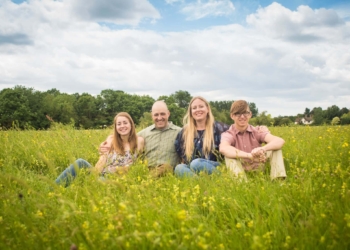Whether we head out for a stroll, go to an event or travel for a vacation, we all like to document our memorable adventures. Thankfully, you don’t need to lug around heavy professional gear these days since current smartphones are more than capable of capturing high-quality images. But how do you elevate your photos from good to great? Here are a few essential smartphone camera tips to help you take better photos.
Clean your lens
Ever wondered why your images look hazy? There’s a good chance your phone lens was covered in fingerprints or collected dust and lint in your pocket. Before taking a photo, get in the habit of cleaning your lens first. If possible, opt for a microfiber or a cotton cloth for wiping any smudges off your camera lens.
Pay attention to composition
Before snapping away, think about what you are trying to capture and how you can best photograph it. Consider the following tips to help you compose better photos:
- Gridlines: Turn on gridlines in your camera settings to help you better align your photos with any horizontal or vertical lines.
- The rule of thirds: Instead of centering your subject in the middle of your image, place them (or it) off-center to make your photo more balanced.
- Reflections: To add creativity and dimension to your images, look for opportunities to photograph with reflections––for example, puddles, large bodies of water, mirrors or even a glass. Pro tip: turn on a wide-angle lens and turn your phone upside down to ensure the lens is as close to the reflecting surface as possible. This technique adds a dramatic effect.

- Framing: Use objects in the foreground to frame your subject. For example, use tree branches or a door to capture the room beyond it. This technique can also help you create an optical illusion and “hide” unnecessary people or items from your picture. For example, by bringing my smartphone closer to the tulips in the image below, I could hide crowds of people at the Capitol, showcasing the beauty of the flowers against the architecturally striking white building.

- Leading lines: Look around to see if any lines can help draw your eye towards a specific part of the frame or your subject. Examples include tree branches, staircases, railing, building facades, train tracks and roads. This method creates a sense of depth in an image.

READ: Best ways to enjoy cherry blossoms in Washington, D.C.
Work with your light
When is the best time to take pictures? Any photographer will tell you that the ‘Golden Hour’ – an hour during sunrise and an hour at sunset – is the ideal time to take photos as the light is soft and casts a pleasing hue onto your subject. However, you can capture equally beautiful images in the middle of the day if you know how to work around the sun. While photographing people, always place your subject against the sun to avoid harsh light (and squinting eyes) and distracting shadows on their faces. Another trick is to move your subjects into the shade, which will ensure their faces are not unevenly exposed.
While photographing a cityscape, observe if there are any interesting shadows you can capture. Finding contrasts with light and color will provide interesting juxtapositions in your images.

Learn basic editing
A few simple editing tools can help touch up your images and make them pop. You can edit directly through your smartphone’s built-in editing tool or download an app to tweak a few things. While editing, always start by adjusting the horizon in your images. Afterward, also consider adjusting brightness, exposure, contrast and saturation. If you photographed against the sun and your subjects are a little underexposed (dark), try increasing shadows while also decreasing highlights. Lastly, I have found that using the dehaze tool helps bring out colors and details in smartphone images. Here are a few apps you can use for editing: Lightroom, VSCO, Snapseed and A Color Story.

Last but most certainly not least, practice, practice, practice. Remember, you have a unique world perspective, so never compare your work to other creatives out there. Observe and capture the world from your point of view while applying the tips above.
Read comments







































